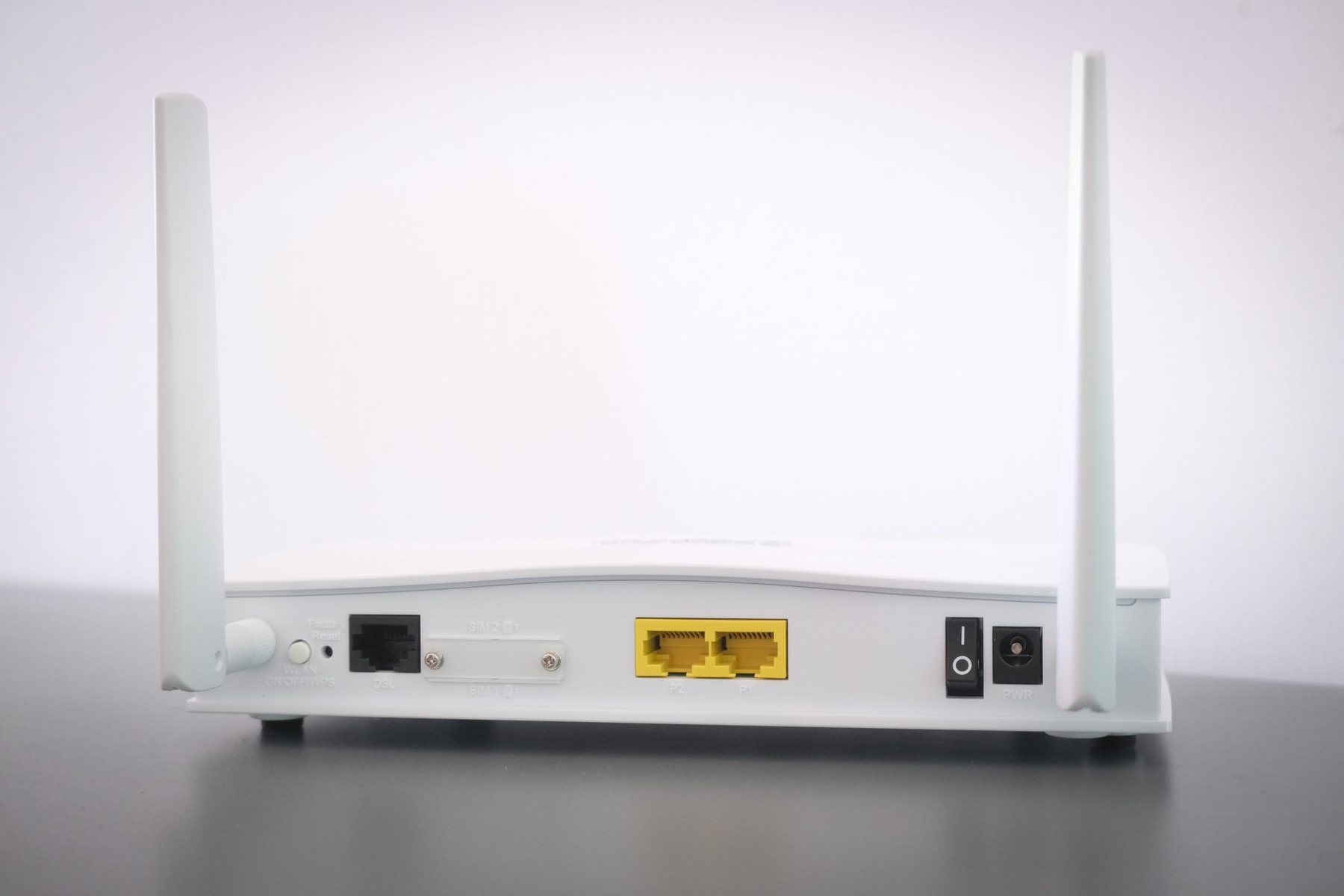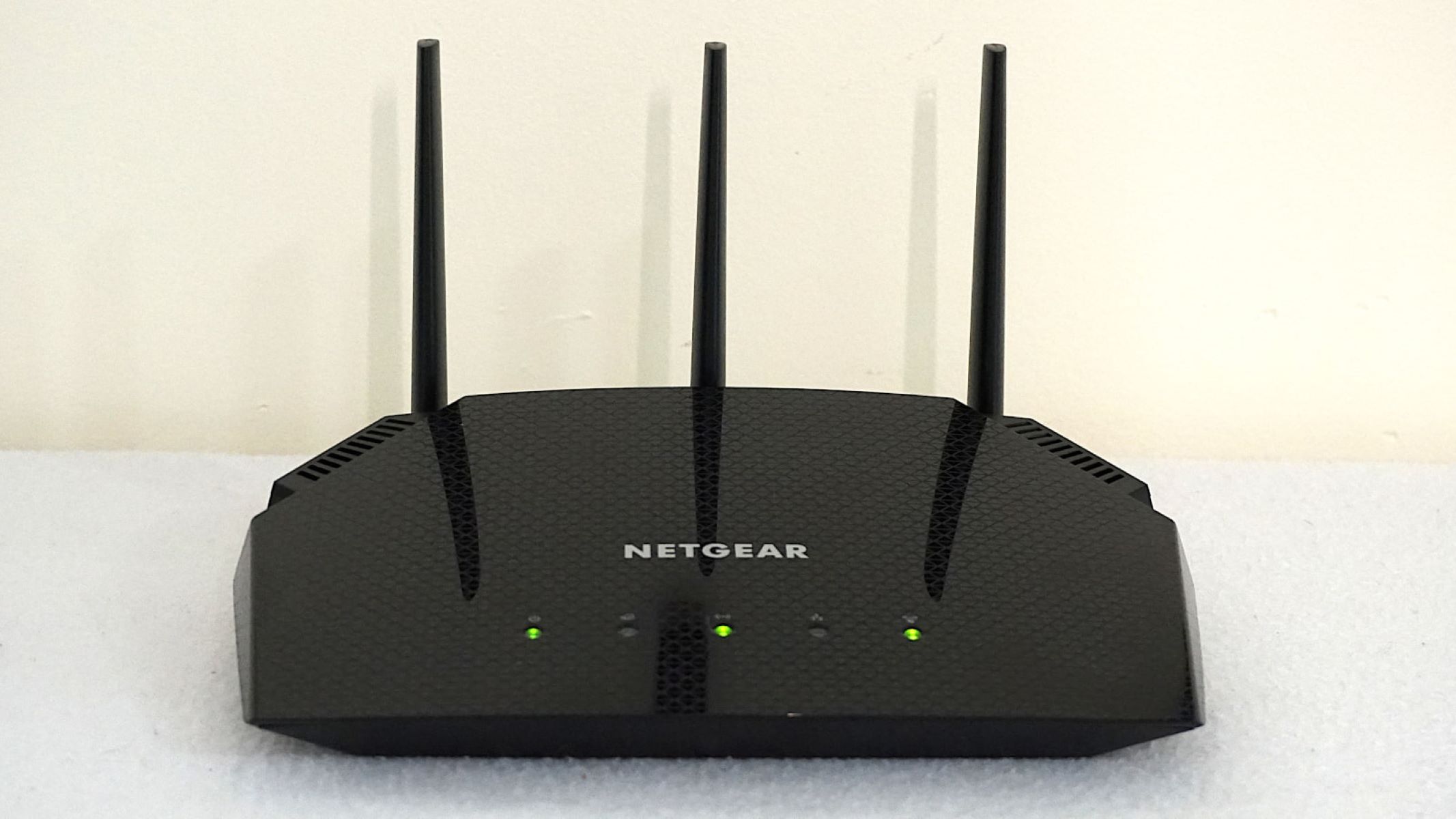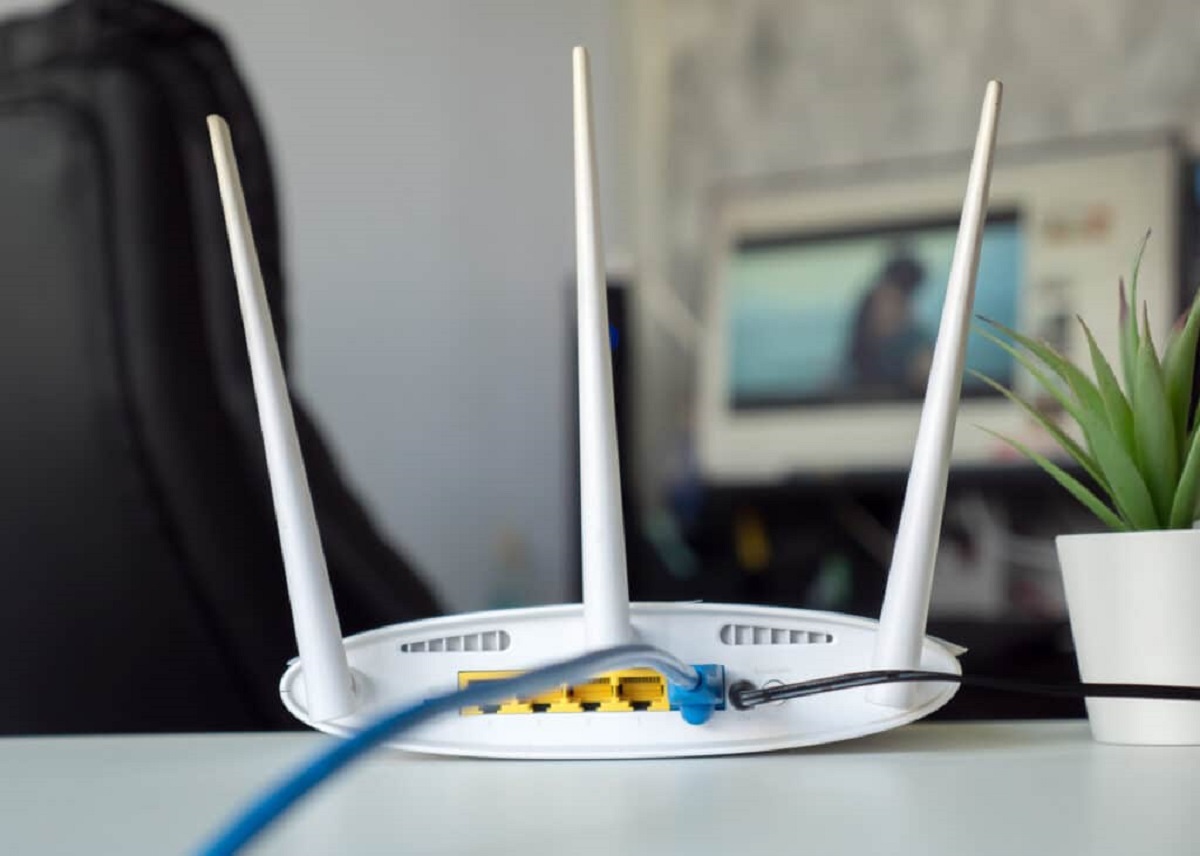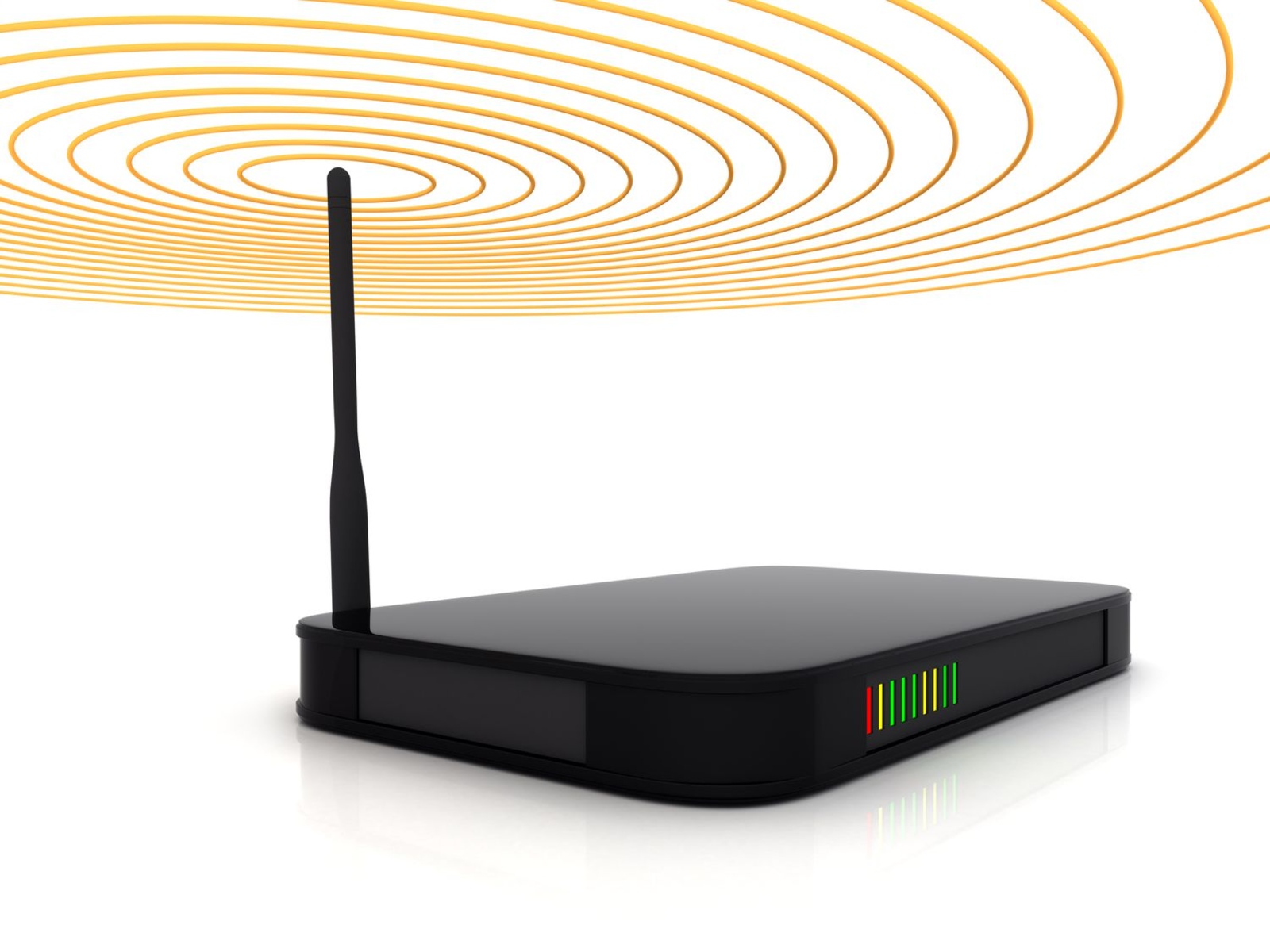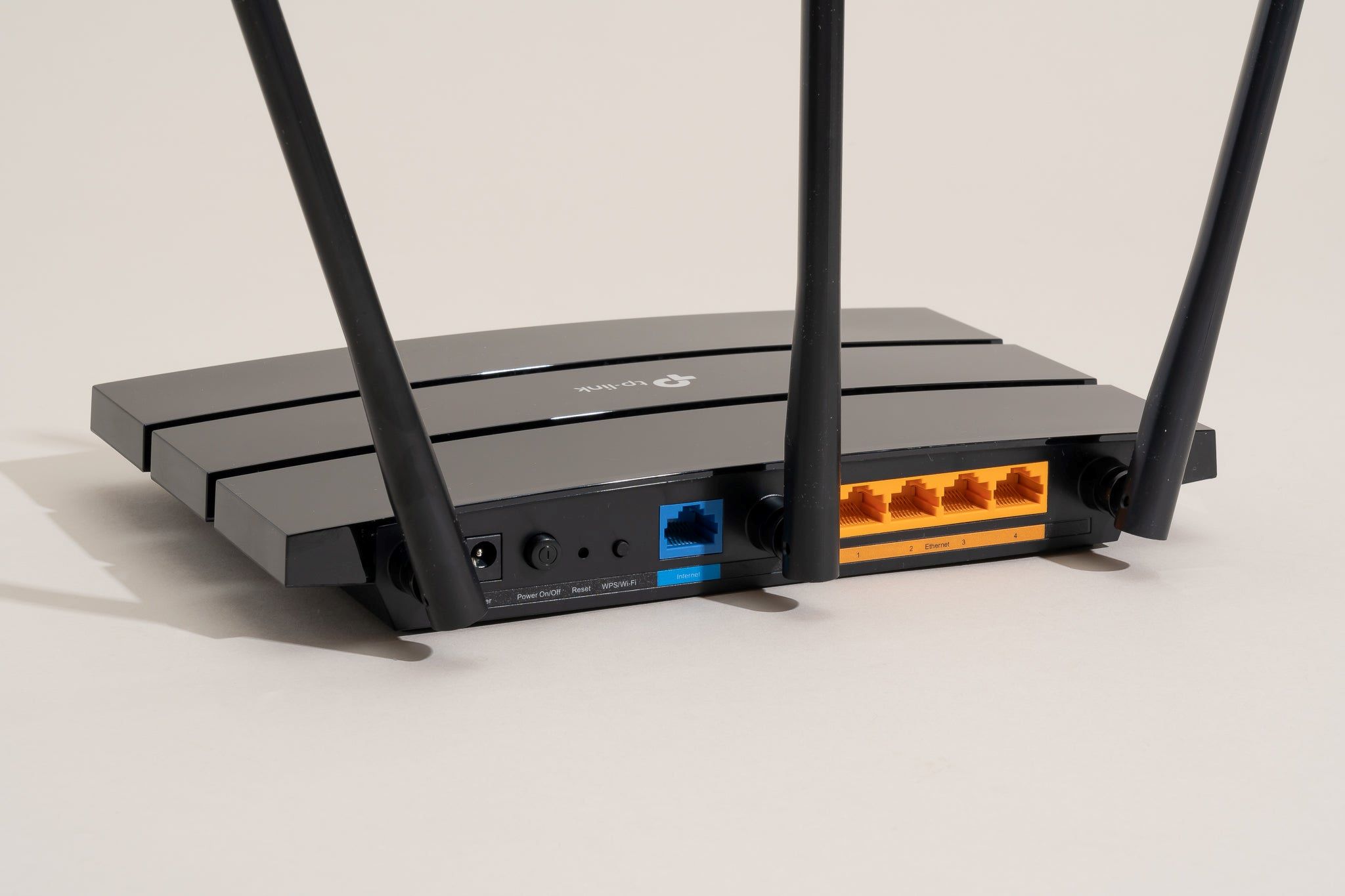Introduction
A wireless router is an essential device in most modern homes and offices, providing internet connectivity to various devices such as laptops, smartphones, and smart home appliances. However, like any other electronic device, wireless routers have a limited lifespan. Understanding the factors that affect the longevity of a router is crucial for making informed decisions when purchasing and maintaining this vital piece of networking hardware.
As technology continues to evolve at a rapid pace, wireless router technology is no exception. Newer models boast faster connection speeds, better range, and improved security features. With constant advancements, it is important to keep up with the latest trends to ensure optimal network performance and a reliable internet connection.
Aside from technological advancements, the quality of manufacturing plays a vital role in determining the lifespan of a wireless router. Some manufacturers prioritize durability and long-term performance, while others focus more on cost-effectiveness and affordability. Understanding the reputation and track record of a manufacturer can give you insights into the potential longevity of their routers.
Usage also affects the lifespan of a wireless router. Routers that are subjected to heavy loads, such as serving multiple devices simultaneously or streaming high-definition video content, may experience wear and tear at a faster rate. Similarly, routers that are turned on 24/7 are likely to age more quickly than those that are only used during specific times.
The wireless standards supported by a router also play a role in its lifespan. With the introduction of new standards like 802.11ac and the upcoming 802.11ax, older routers compatible with outdated standards may struggle to keep up with modern network demands. Upgrading to a router that supports the latest wireless standards can enhance performance and extend the lifespan of your network.
Regular security updates and firmware upgrades are crucial for maintaining the longevity of a wireless router. Cyber threats are constantly evolving, and manufacturers release updates to patch vulnerabilities and improve security measures. Keeping your router’s firmware up to date ensures protection against potential breaches and extends its lifespan.
Environmental factors also play a role in the lifespan of a wireless router. Exposure to extreme temperatures, humidity, and physical damage can negatively impact its performance and longevity. Installing the router in a cool, well-ventilated area and protecting it from physical damage can help prolong its lifespan.
In the next sections, we will explore signs to look out for that may indicate your router is reaching the end of its lifespan, as well as some tips and tricks for extending its longevity.
Factors Affecting Router Lifespan
Several factors can contribute to the lifespan of a wireless router. Understanding these factors can help you make informed decisions when purchasing a new router and can also guide you in maintaining your current router to ensure its longevity.
One of the primary factors affecting router lifespan is the quality of manufacturing. Routers manufactured by reputable companies that prioritize durability and long-term performance are likely to have a longer lifespan compared to lower-quality alternatives. When purchasing a router, it’s important to research the reputation of the manufacturer and read customer reviews to gauge the durability of the product.
Technology advancements also influence the lifespan of a router. With each passing year, new wireless standards and technologies emerge to improve network performance and increase connection speeds. If your router is several years old and does not support the latest wireless standards, it may not be able to keep up with the demands of newer devices and applications. Upgrading to a router that supports the latest standards can help extend its lifespan and provide better overall performance.
The way you use your router can also impact its lifespan. Routers that are subjected to heavy usage, such as constantly streaming high-definition videos or serving multiple devices simultaneously, may experience greater wear and tear than routers used for lighter tasks. Additionally, routers that are kept on 24/7 may age more quickly compared to routers that are turned off when not in use. Properly managing the usage and power cycling of your router can contribute to its longevity.
Another significant factor is the wireless standards supported by the router. Older routers that are compatible with outdated standards may struggle to provide reliable and fast connections in a network environment dominated by modern devices. If your router supports older standards like 802.11g or 802.11n, upgrading to a router that supports the newest standards like 802.11ac or 802.11ax can improve your network’s performance and extend the overall lifespan of your router.
Regular security updates and firmware upgrades are essential for maintaining the longevity of your router. Manufacturers release updates to address vulnerabilities and enhance security measures, providing protection against potential cyber threats. Routinely updating your router’s firmware ensures that it remains secure and can significantly extend its lifespan.
Environmental factors also play a role in the lifespan of a router. Extreme temperatures, excessive humidity, and physical damage can all have detrimental effects on the router’s performance and longevity. It is important to install your router in a well-ventilated area away from direct sunlight and to protect it from physical damage. This can help prevent overheating and prolong its lifespan.
By considering these factors and taking appropriate actions, such as purchasing high-quality routers, upgrading to the latest standards, managing usage, and performing regular updates, you can maximize the lifespan of your wireless router and ensure a reliable and efficient network.
Quality of Manufacturing
The quality of manufacturing of a wireless router is a crucial factor that determines its lifespan. When purchasing a router, it’s important to consider the reputation and track record of the manufacturer to ensure you are investing in a high-quality product.
Routers manufactured by reputable companies that prioritize durability and long-term performance are more likely to have a longer lifespan. These manufacturers typically use high-quality components and undergo rigorous testing procedures to ensure their routers meet stringent standards. Such routers are designed to withstand the demands of daily usage and provide reliable performance over an extended period.
In contrast, lower-quality routers may be more prone to hardware failures and performance issues. These routers may be constructed with cheaper materials and components, which can lead to a shorter lifespan. Problems like frequent disconnections, slow internet speeds, and limited coverage may arise more quickly with lower-quality routers.
When researching routers, it’s beneficial to read customer reviews and consult expert opinions. This can provide valuable insights into the reliability and durability of specific router models. Look for reviews that discuss the build quality, materials used, and overall customer satisfaction. A router with positive reviews regarding its manufacturing quality is more likely to have a longer lifespan.
It’s also worth considering the warranty and customer support provided by the manufacturer. A warranty period of several years indicates the manufacturer’s confidence in their product’s quality. Additionally, responsive customer support can be a valuable resource if you encounter any issues with your router. Manufacturers that stand behind their products are more likely to produce routers that are built to last.
Investing in a high-quality router may initially involve a higher upfront cost, but it can save you money in the long run. A well-manufactured router is less likely to experience hardware failures, reducing the need for frequent replacements. It can also provide a stable and reliable internet connection, resulting in improved productivity and a better online experience.
Taking the time to research the manufacturing quality of a router and opting for reputable manufacturers can have a significant impact on the lifespan of your wireless router. By investing in a high-quality product, you can enjoy a reliable and long-lasting internet connection for years to come.
Technology Advancements
Technology advancements play a significant role in determining the lifespan of a wireless router. As the field of networking continues to evolve, new wireless standards and technologies are introduced to meet the increasing demands of modern devices and applications.
One of the key areas of advancement is in wireless standards. Earlier standards like 802.11g and 802.11n provided adequate speeds for their time, but as the number of connected devices and the consumption of bandwidth-intensive applications have increased, newer standards like 802.11ac and the upcoming 802.11ax have emerged to deliver faster speeds, improved range, and increased capacity. Routers that support these latest standards can provide better performance and a more robust network, ultimately extending the lifespan of the router.
Newer routers also incorporate advanced technologies that optimize network performance and improve reliability. For example, beamforming is a technology that focuses the router’s signal directly to connected devices, enhancing signal strength and coverage. This results in a more stable and reliable connection and can prolong the lifespan of the router by reducing the need for constant signal adjustments and reconnections.
Another technological advancement is the integration of multiple antennas and MIMO (multiple-input, multiple-output) technology. These features enable routers to transmit and receive data simultaneously across multiple streams, increasing network capacity and reducing latency. This is particularly beneficial in environments with numerous devices accessing the network simultaneously, increasing the router’s longevity by distributing the network load effectively.
Security is another area where technology advancements have had a significant impact. With the increasing prevalence of cyber threats, routers now come with more advanced security features. These features include encryption protocols, firewalls, and intrusion detection systems to protect against unauthorized access and ensure data security. Regular firmware updates from manufacturers further enhance the security of the router, safeguarding it against new threats and vulnerabilities.
It’s essential to stay informed about the latest technology advancements in the networking industry. This knowledge allows you to make informed decisions when purchasing a new router or upgrading your existing one. By investing in routers that support the latest wireless standards and incorporate advanced technologies, you can future-proof your network and extend the lifespan of your router.
However, it’s important to note that technology is constantly evolving, and no router is future-proof indefinitely. While newer routers may have advanced features and longer lifespans, it’s still necessary to regularly evaluate and assess the performance of your router to ensure that it continues to meet your networking needs. Upgrading your router when necessary can provide better performance, improved security, and an extended lifespan for your network.
Router Usage
The usage patterns and demands placed on a wireless router can significantly impact its lifespan. Understanding how you use your router and taking appropriate measures to manage its usage can help prolong its longevity.
One factor to consider is the number of devices connected to your router. Routers that constantly serve a large number of devices, such as smartphones, tablets, laptops, gaming consoles, and smart home devices, may experience more strain and wear and tear compared to routers with lighter loads. Managing the number of connected devices and distributing the network load evenly can help alleviate the strain on the router and extend its lifespan.
Another aspect of router usage is the type of activities being performed over the network. Streaming high-definition videos, online gaming, and large file downloads can place heavy demands on the router’s resources. These activities require a stable and fast internet connection, which can increase the load on the router’s processor and memory. It’s important to consider the capabilities of your router and its ability to handle these activities without compromising its performance. If needed, upgrading to a router with higher specifications or faster processing power can help ensure smooth network performance and prolong the lifespan of the router.
The duration of continuous router usage also impacts its lifespan. Some users prefer to keep their routers turned on 24/7 for convenience and uninterrupted internet access. However, this constant operation can contribute to the wear and tear of the router components and potentially shorten its lifespan. If possible, consider power-cycling your router periodically, allowing it to rest and cool down. This simple action can help mitigate stress on the router’s internal components and contribute to its longevity.
It’s also essential to place the router in an optimal location. Routers that are placed in enclosed spaces or near heat-producing appliances may be exposed to higher temperatures, which can affect their performance and reliability. Similarly, routers placed too far away from the devices they need to connect to might experience signal degradation and reduced coverage. Optimally positioning the router in a central and well-ventilated area can help maintain a stable connection and prolong its lifespan.
Lastly, regular maintenance of the router is crucial for ensuring its longevity. Keeping the router clean and free from dust and debris can prevent overheating and potential damage. Additionally, updating the router’s firmware as recommended by the manufacturer can provide bug fixes, security enhancements, and performance improvements, which can help maintain a reliable network and extend the router’s lifespan.
By considering router usage patterns, managing the number of connected devices, performing regular maintenance, and power-cycling when necessary, you can optimize the lifespan of your wireless router. Taking these measures will ensure a stable and reliable network experience, even as technology advances and your networking needs evolve.
Wireless Standards
The wireless standards supported by a router have a significant impact on its lifespan. With the constant evolution of technology, new standards are introduced to enhance network performance, increase data transfer speeds, and improve overall connectivity.
Older routers that support outdated wireless standards may struggle to keep up with the demands of modern devices and applications. For example, routers that support the older 802.11g or 802.11n standards may not provide the same level of performance and coverage as routers supporting the latest standards like 802.11ac or the upcoming 802.11ax.
The main advantage of upgrading to routers that support the latest wireless standards is improved speed and throughput. Newer standards enable faster data transfer rates, allowing for quicker downloads, smoother streaming experiences, and better overall network responsiveness. With the increasing prevalence of high-definition media and bandwidth-intensive applications, routers that support these standards can provide a more enjoyable and efficient online experience.
In addition to speed improvements, newer standards often provide enhancements in range and coverage. This means that routers supporting the latest standards can reach a wider area and maintain a stable connection even further away from the router. This is particularly beneficial for larger homes or offices with multiple devices spread across different rooms.
Another advantage of newer wireless standards is the ability to handle higher device densities. As the number of connected devices continues to grow, routers need to be capable of efficiently managing network traffic and ensuring a stable connection for all devices. Upgrading to routers supporting the latest standards can help alleviate congestion and provide better performance when multiple devices are connected simultaneously.
However, it’s important to note that simply upgrading to the latest wireless standard does not guarantee a router’s longevity. Technology is constantly evolving, and new standards emerge regularly. It’s advisable to consider future-proofing your network by opting for routers with support for the most recent standards available at the time of purchase.
It’s also worth mentioning that compatibility between routers and devices is essential. While newer routers may support the latest standards, if your devices only support older standards, you may not fully benefit from the upgraded router. It’s important to ensure that your devices are compatible with the router’s supported standards to take full advantage of the improved performance and longevity.
By upgrading to routers that support the latest wireless standards and ensuring device compatibility, you can optimize your network performance, future-proof your setup, and extend the lifespan of your wireless router.
Security Updates and Firmware Upgrades
Regular security updates and firmware upgrades are essential for maintaining the longevity of your wireless router. Manufacturers release these updates to address vulnerabilities, improve performance, and enhance the overall security of the router.
Cyber threats are constantly evolving, with new techniques and vulnerabilities being discovered regularly. Manufacturers release security updates to patch these vulnerabilities and protect your router from potential breaches. By keeping your router’s firmware up to date, you ensure that it has the latest security measures in place to safeguard your network.
Security updates are not limited to addressing vulnerabilities; they may also introduce new security features and enhancements. These updates may include firewall improvements, encryption protocol updates, or additional authentication methods. Staying current with these updates helps protect your network from unauthorized access and potential cyber attacks.
Regular firmware upgrades also provide performance improvements and bug fixes. Manufacturers often identify and address issues that may affect the stability, speed, or functionality of the router. By regularly updating the firmware, you can benefit from these optimizations and ensure that your router performs at its best.
Most routers have built-in mechanisms to check for firmware updates automatically. However, it’s a good practice to periodically check for updates manually as well. This ensures that you don’t miss any critical updates that may be necessary for the security and performance of your router.
When performing firmware upgrades, it’s important to follow the manufacturer’s instructions carefully. Some firmware upgrades may require specific steps or precautions to avoid interruptions or potential damages. Always back up your router’s settings before initiating a firmware upgrade to avoid any data loss or configuration issues.
In addition to regular updates, it’s important to note that the lifespan of a router may also depend on the manufacturer’s commitment to providing ongoing support. Manufacturers that are known for their active support and frequent firmware updates tend to have routers with a longer lifespan. Researching the manufacturer’s track record and customer reviews can help gauge their commitment to ongoing support.
It’s important to prioritize the security and performance of your network by regularly updating your router’s firmware. By doing so, you not only enhance your network’s security but also ensure that your router operates at its best for an extended period of time.
Environmental Factors
Environmental factors can have a significant impact on the lifespan of a wireless router. Exposure to certain conditions can lead to degradation of the router’s internal components and impact its overall performance. Understanding and mitigating these environmental factors can help prolong the lifespan of your router.
One important factor to consider is temperature. Routers are susceptible to damage from extreme heat or cold. High temperatures can cause overheating, leading to performance issues and potentially irreparable damage. On the other hand, extreme cold can affect the router’s functionality and reduce its lifespan. It’s important to place the router in a well-ventilated area away from direct sunlight, and avoid exposing it to extreme temperature fluctuations.
Humidity is another factor that can negatively affect a router’s lifespan. High levels of humidity can cause electrical components to corrode and result in performance issues or even total failure. It’s recommended to keep the router in a dry environment and use dehumidifiers if necessary, especially in areas with high humidity levels.
Physical damage is another environmental factor to consider. Routers should be placed in a location where they are less likely to be accidentally bumped, knocked over, or tampered with. Physical damage can lead to internal component failures and may require costly repairs or replacement of the router.
Dust and debris can also impact the performance and longevity of a router. Dust can settle on the internal components, obstruct airflow, and contribute to overheating. Regularly cleaning the router with a soft brush or compressed air can help remove dust and debris and prevent potential damage.
Noise interference from other electronic devices can also affect a router’s performance. Devices such as microwave ovens, cordless phones, and neighboring routers can generate electromagnetic interference that disrupts the router signal. Placing the router away from such devices can reduce the likelihood of interference and maintain a stable connection.
Finally, power surges can pose a risk to routers. Sudden voltage spikes can damage the internal circuitry of the router, leading to failure. It’s advisable to use surge protectors or uninterruptible power supplies (UPS) to safeguard the router against power surges.
By taking environmental factors into account and implementing preventive measures, you can extend the lifespan of your wireless router. Placing the router in a well-ventilated area, protecting it from physical damage, keeping it clean from dust and debris, minimizing noise interference, and using surge protection, can help ensure the router operates efficiently and reliably for an extended period of time.
Signs of a Dying Router
Over time, a wireless router may show signs of deteriorating performance, indicating that it is reaching the end of its lifespan. Recognizing these signs can help you take proactive measures to address the issues or prepare for the replacement of your router.
One common sign of a dying router is a significant decrease in internet speed or inconsistent connectivity. If you notice a sudden drop in internet speed or frequent disconnections, it could indicate that the router’s internal components are no longer functioning optimally. While it’s important to rule out other potential causes, such as issues with your internet service provider or network congestion, persistent and unexplained performance issues may be an indication of a dying router.
Another sign to watch for is a limited Wi-Fi range or poor coverage. If you find that the Wi-Fi signal doesn’t reach as far as it used to, or if there are dead zones within your home or office where the signal is weak or nonexistent, it may be a sign that the router’s antenna or signal transmission capabilities are deteriorating. This can be particularly noticeable if you have recently added new devices or expanded your network coverage area.
Router hardware failures can manifest in various ways. For example, if the router frequently restarts or freezes, it could indicate an internal hardware issue. Similarly, if certain ports or functions on the router stop working, it may indicate that specific components have failed. Be on the lookout for any unusual behavior or functionality issues with your router.
Another sign of a dying router is the inability to consistently update the firmware. While firmware updates are crucial for maintaining optimal performance and security, a router nearing the end of its life may struggle to install the latest firmware updates. This may be a result of hardware limitations or manufacturer discontinuation of support for older models.
Excessive heat or unusual noises coming from the router can also be signs of its declining health. Overheating may suggest that the cooling system within the router is insufficient or that internal components are malfunctioning. Unusual noises, like grinding or buzzing sounds, can be indicative of failing fans or other mechanical components.
Ultimately, if you are consistently experiencing multiple issues with your router, despite troubleshooting and attempting to resolve the problems, it may be a clear indication that the router is reaching the end of its lifespan.
While the signs mentioned above can help identify a dying router, it’s important to note that certain issues may have alternate causes or temporary solutions. If you suspect that your router is deteriorating, it’s recommended to consult with a professional or contact customer support to properly diagnose the problem and explore potential solutions.
Extending the Lifespan of Your Wireless Router
Your wireless router is a vital component of your home or office network, and taking proactive steps to extend its lifespan can save you money and ensure a reliable internet connection. Here are some tips to help you maximize the lifespan of your wireless router:
- Keep the router clean: Dust and debris can accumulate on the router and obstruct airflow, leading to overheating. Regularly clean the router with a soft brush or compressed air to prevent dust buildup and ensure optimal performance.
- Protect it from power surges: Use a surge protector or uninterruptible power supply (UPS) to safeguard the router against sudden voltage spikes. Power surges can damage internal circuitry and shorten the lifespan of your router.
- Adjust router placement: Position the router in a central location and away from potential sources of interference, such as microwave ovens or cordless phones. This helps ensure a reliable and stable Wi-Fi signal, reducing the strain on the router’s components.
- Manage the number of connected devices: Limit the number of devices connected to your router, especially during heavy usage periods. Too many connected devices can strain the router’s resources and impact its performance and lifespan.
- Power cycle regularly: Power cycling your router periodically can help alleviate strain on its components and refresh its operation. Turn off the router for a few minutes and then power it back on to provide a temporary rest and improve overall stability.
- Stay updated: Regularly check for firmware updates provided by the manufacturer and apply them as recommended. Firmware updates often contain security patches, bug fixes, and performance enhancements that can improve the efficiency and longevity of your router.
- Upgrade when necessary: Keep an eye on advancements in wireless technology. If your router no longer supports the latest wireless standards or is unable to meet your growing network needs, consider upgrading to a newer model. Upgrading to a router that supports the latest standards can provide better performance, coverage, and longevity.
- Monitor temperature: Maintain a cool environment for your router. High temperatures can negatively affect its performance and lifespan. Ensure proper ventilation, avoid placing the router near heat sources, and monitor the ambient temperature to prevent overheating.
By implementing these measures, you can optimize the longevity of your wireless router and ensure a reliable and efficient network connection. Regular maintenance, firmware updates, and being mindful of environmental factors can help your router operate at peak performance for an extended period of time.
Conclusion
A wireless router is an indispensable device that provides internet connectivity to various devices in our homes and offices. To ensure it serves us well for as long as possible, understanding the factors that impact its lifespan is crucial.
Factors such as the quality of manufacturing, technological advancements, router usage, wireless standards, security updates, and environmental conditions all play a significant role in determining the lifespan of a wireless router.
By choosing routers from reputable manufacturers that prioritize durability and long-term performance, staying current with technology advancements, managing router usage, and keeping the firmware up to date, we can significantly prolong the lifespan and optimize the performance of our routers.
Considering environmental factors such as temperature, humidity, physical damage, and power surges also contributes to a longer lifespan for the router. By taking measures to protect the router from these factors, we ensure it operates efficiently and remains reliable over time.
Recognizing the signs of a dying router enables us to take appropriate action, whether it be troubleshooting, seeking professional help, or preparing for a replacement. Proactive monitoring and maintenance can help us avoid sudden failures and network disruptions.
By implementing best practices that extend the lifespan of our wireless routers, we can save money, enjoy better network performance, and maintain a seamless and reliable internet connection for all our devices. Regularly evaluating and adapting to our evolving networking needs will enable us to make informed decisions about when it’s time to upgrade to a new router.
Remember, a well-maintained and up-to-date wireless router is key to a smooth and efficient network experience. With proper care and attention, we can ensure that our routers serve us well for many years to come.







